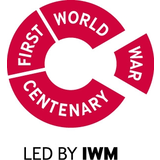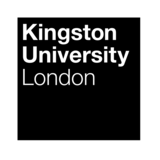Our work abroad during WW1
The British Red Cross is often associated with auxiliary hospitals and fundraising on the home front during the war. However, from the outset the organisation delivered vital services across Europe and Africa. Volunteers and staff travelled to France, Belgium, Serbia, Malta, Italy, Russia, Mesopotamia and Northern Persia.
Hospitals
On 8 August 1914, the surgeon general Sir Alfred Keogh, chief commissioner, went to inspect the recently arrived British Red Cross unit in Brussels. This unit contained ten surgeons, ten dressers and 20 trained nurses. Following discussions with the French Red Cross and the British ambassador, four hospitals were opened in Paris in the same month upon the recommendation of Keogh. The 30 surgeons and 150 nurses stationed there quickly prepared to receive casualties from the battlefield, who were transported by taxis and motorcars by volunteer drivers.
In September, a hospital containing 300 beds opened in the Grande Seminaire in Rouen. No 2 Red Cross Hospital, as it was known, was used to treat officers and provided a hostel to house the patients’ relatives.
In October 1914, a unit of six doctors and 12 orderlies was despatched to Serbia, soon to be followed by a second unit which contained surgeons, trained nurses and seven members of the Voluntary Aid Detachment (VAD) who were stationed at Vrnjatchka Banja. Several members of the unit were captured by the invading Austro-German army, which transferred the prisoners to Krusevatz and thereafter to Belgrade. They were allowed to return to England in March 1916.
An entire Joint War Committee hospital unit left England on 19 January 1915 for Montenegro. Upon arriving at their destination, Dr Clemow and his supporting staff took charge of a military hospital containing 126 patients but by November there was a full evacuation as Bulgarian and Austro-German armies rapidly advanced.
As the war escalated in the Mediterranean, military hospital bases were established in Malta, Egypt and Mudros. The number of beds available did not meet the ever-growing requirements of the conflict and therefore the volunteers worked hard to make improvements. They recruited additional staff from the Malta St John Ambulance Brigade and the VAD.
List of hospitals in France and Belgium managed by the Joint War Committee:
- No. 1 Red Cross Hospital, Le Touquet
- No. 2 Red Cross Hospital for British Officers, Rouen
- No. 3 Red Cross Hospital, Abbeville
- No. 4 Red Cross Hospital, Wimereux
- No. 5 Red Cross Hospital, Wimeruex
- No. 6 Red Cross Hospital, Etaples
- No. 7 Red Cross Hospital, Palermo
- No. 8 Red Cross Hospital
- No. 9 Red Cross Hospital
- No. 10 Red Cross Hospital, Le Treport
Transport
It was soon evident that a well-organised transport system was required. Lessons learned from the Crimean War, together with an already struggling response to the battles in August, identified the need for efficient, and if possible, comfortable methods of transport to carry the wounded to hospitals and rest stations.
The Royal Automobile Club offered cars and drivers to the Red Cross in September and “Dr Edward Stewart with a small unit of eight motor ambulances and six motor cars with their drivers was sent to Boulogne to search for wounded in the neighbourhood of Cambrai and Peronne.”
On 2 October, an appeal was made in The Times on behalf of the British Red Cross Society for funds to provide further motor ambulances. The response was overwhelming, and enough money was raised to run 512 vehicles. No 2 ambulance convoy, comprised of 30 ambulance cars with drivers and orderlies, arrived in Boulogne just seven days later.
The work of the Joint War Committee motor ambulance department expanded. Soon ambulances, trains and motor launch boats were used to bolster the work of local authorities. In October, No. 11 hospital train was ready for service and in 1915, a transport unit was established at Calais. This was staffed by members of the First Aid Nursing Yeomanry Corps (FANY). The FANY was formed of female drivers who were equipped with the badge of the Joint War Committee and the Red Cross brassard.
In April 1916, 12 female members of the VAD became responsible for a unit based at Etretat, soon followed by 110 drivers in Etaples and further units at Le Treport, Wimereux and St Omer.
By 1917, five motor ambulance convoys were in service abroad and “the entire transport of sick and wounded from Dunkirk to Deaville was carried out by Joint Committee ambulances and personnel.” With air raids on many towns, the convoys worked together with the Canadian Red Cross and the Havre Hospital Ships.
The year 1918 was particularly demanding – Joint War Committee reports state that in St Omer alone, the Red Cross convoy assisted over 106,000 casualties and in Etaples the number was an incredible 896,000. By the end of the conflict, nearly two million wounded were transported by the British Red Cross in Boulogne alone.
As well as providing vehicles to move casualties, the motor ambulance department supplied specially equipped units with x-ray machines, dental facilities, soup kitchens and laboratories. Lorries and cars were also used to communicate between the Joint War Committee bases and services across France and Belgium.
A Testament of Youth is a moving memoir by Vera Brittain, a VAD nurse at Etaples.
Rest stations
The first rest station manned by members of the VAD was established at Boulogne in October 1914. Led by Dame Katharine Furse, 16 representatives from the county of London detachments No.s 128 and 146 converted three wagons and two passenger coaches into a dispensary, kitchen, store and quarters. Wounded men were offered care and food at the station and it was reported that over 1,000 were fed within 24 hours of the service opening.
In her commentary on the First World War, Dame Beryl Oliver writes: “From this small beginning grew the various developments of Red Cross work undertaken overseas by … Voluntary Aid Detachments which have been of so much value to the sick and wounded in almost every country where British troops have been engaged.”
In other areas, Red Cross rest stations provided a source of comfort to visitors with the supply of ‘luxuries’, including chocolate, cigarettes and newspapers.
Stores department
The stores department processed donations and distributed gifts from its premises at Devonshire House and 83 Pall Mall. Five Red Cross depots were opened at Rouen, Paris, Havre, Calais and Marseilles. Three advance depots for the northern, central and southern areas were placed close to the front line. Supplies included hospital equipment such as medical and first aid care, plus lamps, stoves, hot water bottles, tea urns, beds and tobacco.
The provision of food was essential and supplies of perishables and tinned products were quickly made available to meet the demands of hospitals at home and abroad. Goods arrived from around the world and were shipped to Egypt, Malta, Bombay and Romania. The stores department relied on several modes of transport to convey its goods. The motor launch department was developed and the fleet was used to transfer mobile tent hospitals to Northern Rhodesia, coal to Petrograd, drugs to Uganda and dressing gowns to Switzerland. A newspaper and magazine service was offered with 45,000 publications distributed in hospitals in France and Belgium in 1918 alone.
The stores department was also responsible for constructing buildings, including concert halls and club rooms.
Medical staff and members of the Voluntary Aid Detachment
The Joint War Committee personnel department was responsible for recruiting doctors, radiographers, nurses, orderlies and cooks. Although the majority of these were stationed in auxiliary hospitals in the United Kingdom, several representatives were sent overseas. A total of 236 doctors were sent to Europe and Africa whilst Dame Sarah Swift, matron-in-chief, organised the despatch of 762 nurses to France and Belgium and 666 to other conflict areas. The Voluntary Aid Detachment was also well represented with male orderlies stationed in Paris from August 1914, and trained nurses reinforcing local services in Serbian hospitals. In fact, military nursing members of the VAD were recruited to hospitals in many areas including France, Egypt and Malta. Dame Beryl Oliver reports that 200 nurses were sent to Malta and a further 200 to Egypt in mid-1915, whilst approximately 50 nurses were posted to France each week.
In addition to serving in hospitals, members of the VAD based overseas with the Joint War Committee assisted with the running of a number of buildings and services including the committee headquarters at Boulogne.
The VAD general service section posted members abroad from October 1917 to serve in general service units attached to military hospitals in France, Salonica, Italy, Germany and Russia. They were employed as typists, pharmacists, laboratory and x-ray assistants, cooks, laundresses and drivers. They opened rest stations, traced the owners of undelivered letters, ran invalid kitchens, set up hostels for patients’ relatives, provided entertainment in recreation huts, and drove in Red Cross motor ambulance convoys.
A record of the Joint War Committee personnel who served overseas was published in 1918 and contains almost 400 pages of names.
You may also be interested in:
British Red Cross transport
Volunteers transported the wounded by road, train and sea in WW1.
Auxiliary hospitals
British Red Cross hospitals proved vital in WW1, treating hundreds.
Who were the VAD volunteers?
Find out about how VADs were recruited, the duties carried out and awards they won.


